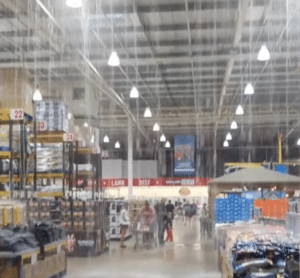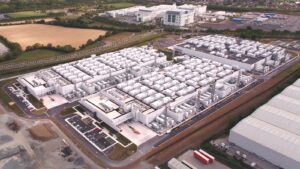-
ProjectWest Pharmaceuticals
-
LocationWaterford, Ireland
-
ClientARUP
-
TechnologySiphonic drainage system
-
ScopeDesign, Prefabrication, Installation
The West Pharmaceuticals development is a 8,800sqm facility in County Waterford, Ireland. The €100M project was completed in 2018. Capcon Engineering were involved in the project from the initial concept design at planning stage right through to completion. During the design phase, ARUP engaged with Capcon Engineering for assistance and guidance on the tender designs and package for the works. Following this we were appointed as the design, supply and installation contractor by Sisk.
Main Challenges
There were two main challenges on this project. Coordination was the first challenge to overcome in a heavily serviced environment that was only partly coordinated using BIM. Our utilisation with BIM technology meant we could solve many of the design pinch points and ensure our routes were fully coordinated with all services when we got to site.
The second challenge was programming the on-site installation works. Very short time windows were allocated for our crews to install our pipework before the follow-on trades blocked our installation areas. To maximise our progress on-site, we prefabricated all pipework off-site in our manufacturing facility in Maynooth. This reduced our on-site labour time by approximately 20% and meant all works were completed to schedule within the main build programme.
Design
Early engagement with ARUP meant we could design the very best drainage system for the building. Not only did this reduce the amount of pipework and outlets necessary to drain the building but also reduced the amount of civil drainage required. One of the more challenging aspects of this job was that not all contractors involved were using BIM technology. As one of the contractors who were using BIM on the job, Capcon Engineering were able to assist the other members of the design team to ensure full collaboration regardless of whether BIM or CAD was being used by the contractor. We produced plans in both formats so all parties could review and comment.
Off-site Prefabrication
All pipework was prefabricated off-site which significantly reduced the amount of time our crews were physically on-site. Minimising time on site was crucial with a tight programme allowing only short windows of time for our crews to get in and out of some of the heavily congested zones. By fabricating all the pipework off site we substantially reduced waste generated on-site and along with the amount of on-site welding needed. This helped reduce overall costs of the project.
Installation
Sequencing and programming were key for us during the installation of our pipework. Sisk had developed a very detailed programme for all the works and we had to synchronise our installation requirements with that. Working with the Sisk team, our project manager coordinated a strict planning schedule and ensured all our materials were on-site and our works were complete within the time windows allocated to us.
We operated a ‘snag as you go’ policy to ensure the works were completed right the first time. As a result, no snagging works were required following the installation, again reducing our time on site. All systems were air tested on completion in compliance with BS EN 12056-3:2000 and we handed over a fully completed and tested system to the client.
We also completed the thermal installation to all pipework prior to handover.
Results
-
CoordinationHigh levels of coordination between all stakeholders resulted in the seamless delivery.
-
1100m of Pipework1100m of pipework was designed, prefabricated, installed and with warranties.
-
1510 Independent Systems2 gravity + 8 siphonic systems: designed, prefabricated, installed and air-tested.
-
Early Engagement AdvantageThe early design significantly reduced the need for civil drainage pipework.
-
13 Billion Litres / YearSystem can cater for over 413 litres/sec, or approximately 13 billion litres/year.






